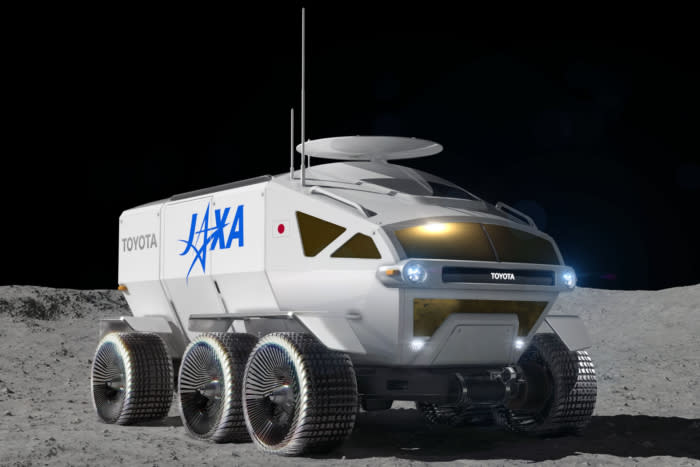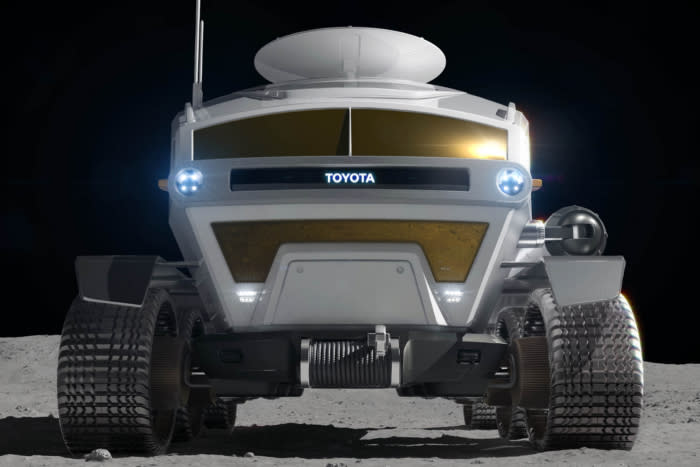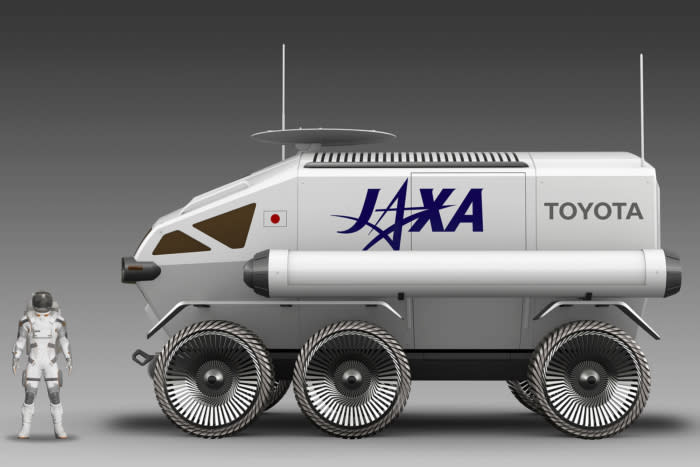Meet the Lunar Cruiser: NASA Taps Toyota for Special Moon Build

- Oops!Something went wrong.Please try again later.
This is one small step for man — but one giant leap for campervans. Astronauts on future moon missions will have a sweet new ride to help with long-term exploration: the Lunar Cruiser.
This pressurized vehicle was developed over a 5-year collaboration between Toyota and the Japan Aerospace Exploration Agency (JAXA). Designed for bigger expeditions across the lunar surface, the experimental rover will now face the real test.
NASA will help ferry the vehicle to the moon, along with several Japanese astronauts who will become the first non-Americans to explore our cosmic backyard. The space agency made the announcement this week, with a signed agreement between President Joe Biden and Prime Minister Fumio Kishida.
“It is a mobile habitat, a lunar lab, a lunar home, and a lunar explorer,” NASA’s Bill Nelson said at a press conference.
A Feat of Engineering
Designing a vehicle for the moon is slightly more complicated than our boring terrestrial campervans. The moon’s surface has one-sixth the gravity of Earth. Temperatures range from -170 to 120 degrees Celsius. Now add in the vacuum of space, strong radiation, and a surface covered with lunar sand.
To overcome those obstacles, the Lunar Cruiser must combine the engineering feats of pressurized rovers, like the unmanned vehicles used on Mars, with the necessities of keeping astronauts alive for days at a time. Oh, and it needs to be a mobile lab, too.
Luckily, Japan’s engineers have until 2031 to finish the design. The Lunar Cruiser must carry two astronauts up to 20 km a day as they survey soil and underground resources. Toyota is developing technology for batteries that produce hydrogen through solar power, and for tires that can handle the Moon’s sandy surface. Other features include a system to convert wastewater into hydrogen fuel and a spacious interior measuring 6x5x4 m.
“It’s going to lead us to cover ground we’ve never covered before because they’ll be out and can stay for several days on the surface,” Nelson said.
‘Quest for the Stars’
The vehicle is scheduled for lunar delivery on the Artemis VII mission in 2031. It will serve as a roving base for astronauts during their explorations near the Lunar South Pole for up to 30 days. Toyota, along with JAXA and NASA, anticipates that the Lunar Cruiser will remain operational for a decade, ZME Science reported.
The Artemis missions mark humanity’s first crewed lunar journeys in more than a half-century. NASA will use the Artemis missions to land the first woman and person of color on the moon. It’s also the first time that NASA has partnered with non-American astronauts in its lunar explorations.
“Today’s agreement is about so much more than just this vehicle,” Nelson said. “The quest for the stars is led by nations that explore the cosmos openly, in peace, and together … America will no longer walk on the moon alone.”
The next mission is Artemis II, slated for September 2025 when a four-person crew will orbit the Moon.
The post Meet the Lunar Cruiser: NASA Taps Toyota for Special Moon Build appeared first on GearJunkie.



